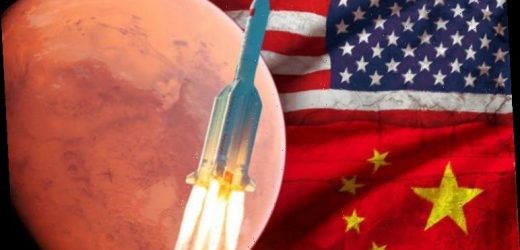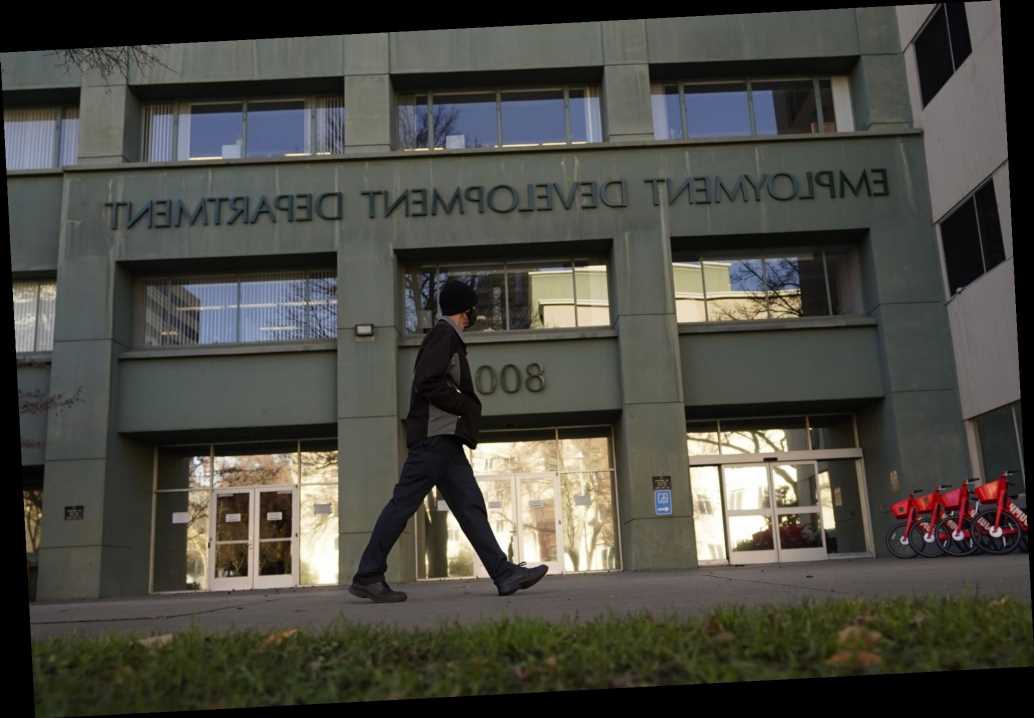Mars: ‘Absolutely’ there is life on red planet says expert
In less than a week, the Chinese Tianwen-1 mission will enter orbit around Mars. And though the rover will not attempt to land until May 10 – three months after NASA’s Perseverance rover lands – China’s list of milestones in space has been rapidly growing in recent years. It was only last year that China joined the world’s most elite club when it became the second only country to plant a flag on the Moon thanks to its Chang’e-5 lunar lander.
The success of the Chang’e-5 mission has shown China is a serious contender in the new Space Race.
And the country’s space ambitions are not limited to just the Moon, or low-Earth orbit (LEO).
According to Steffi Paladini, a reader in Economics and Global Security at Birmingham City University, there is a new space race that is underway and the top prize is Mars.
Space agencies like NASA have already announced their plans to put boots on Mars as early as 2035, using the Moon as a stepping stone into the solar system.
We will use your email address only for sending you newsletters. Please see our Privacy Notice for details of your data protection rights.
Billionaire Elon Musk has also been pumping money into his SpaceX venture, believing he can make humanity a multi-planetary species.
And a day before Tianwen-1’s arrival, the UAE probe, Hope, will also attempt to enter orbit around Mars.
The stakes are, therefore, high and the competition is intense.
In an article titled How Mars became the prize for the new space race – and why China is hellbent on winning it, Dr Paladini argued China looks to space as just another stage for competition.
The US Economic and Security Review Commission acknowledged as much in a 2019 report.
The report stated: “China seeks to become an international leader in space, or what it terms a ‘space power in all respects’.”
She said: “China has already enacted five-year plans for its space activities, the latest of which ended in 2020 with more 140 launches.
“More missions are planned: a new orbital space station, the retrieval of martian samples and a Jupiter exploratory mission among them.”
According to 2017 estimates, China has already committed £8billion ($11billion) towards its goals.
DON’T MISS…
‘Survival is impossible’ Brian Cox’s ‘catastrophic’ space warning [REPORT
End of the world: Warning over dark matter halo near ‘cannibal’ galaxy [INSIGHT]
Listen to Albert Einstein himself explain his E=mc2 formula [VIDEO]
UAE Mars: Animation shows seven month journey
For comparison, the NASA budget for that year was about £15billion ($20billion).
India is also expanding its reach into space, which could be a concern for China.
The country has already reached Mars in 2014 with its Mars Orbiter Mission, which is still circling the Red Planet.
Dr Paladini said: “India’s government released its 2019-20 annual report, which shows a growing military involvement in the space sector.
“And another Moon and Venus missions are well on the Indian ISRO plans, in case the Chinese were not already motivated enough in making Tianwen-1 a resounding success.
“Space Race 2.0 is definitively warming up.”
However, getting to Mars is tricky business and out of the 49 missions launched as of December 2020, only about 20 have made it.
In 2016, the European Space Agency’s (ESA’s) Schiaparelli Mars Explorer crashed into the planet.
The British lander Beagle 2 also failed in 2003 after it most likely did not deploy its solar panels after touching down.
Source: Read Full Article






